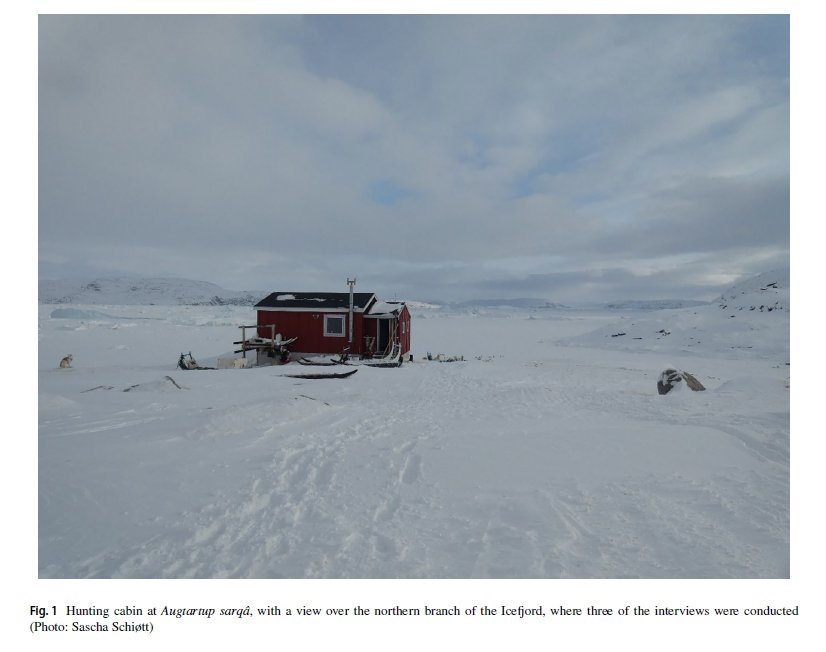Inuit and Local Knowledge on the Marine Ecosystem in Ilulissat Icefjord, Greenland
New publication by Sascha Schiøtt, Pelle Tejsner, and Søren Rysgaard

Abstract:
The interview survey conducted in Ilulissat, Ilimanaq, and Qasigiannguit in Greenland during March–April 2019 showed that the local fishers are changing fishing strategies and adapting to a changing environment caused by climate change. The main fjord of Ilulissat Icefjord is usually filled with icebergs year-round, making it impossible to navigate. Currently, there are more ice clearing events in Ilulissat Icefjord during the winter than previously. The traditional pattern of going fishing using dogsled is changing and fishing from boats occurs, whenever the main fjord clears of ice. The poorer sea ice conditions in the southern branch of the fjord system, combined with the fact that it is increasingly challenging to reach fishing sites, have resulted in fishers from Qasigiannguit not going to the Icefjord as much as they used to. Ilulissat Icefjord is by any means considered important fishing and hunting ground by locals, as both Greenland halibut and ringed seals are known to be of larger size inside the fjord system, when compared to those caught in Disco Bay. The locals use Ilulissat Icefjord during a limited period of the year, and the fjord is therefore said to be protected from overexploitation. They observe the immediate effects of climate change from changes in the ice conditions, a change in the fjord's accessibility, and the occurrence of Atlantic cod, which were not present in the fjord system in such numbers before.
